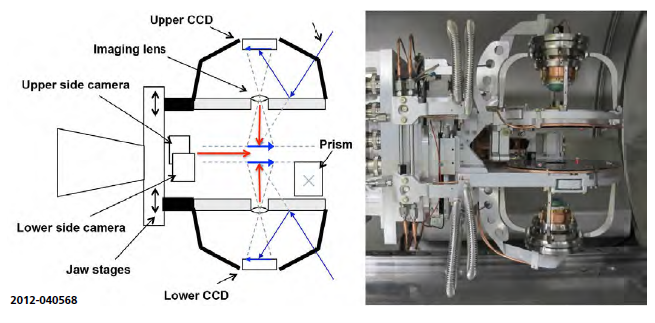Target Area Allignment
Target and beam alignment are done using the chamber center reference system (CCRS), the target alignment sensor (TAS), and TARPOS, positioned around the target chamber as illustrated in Figure 5-1. Details on the individual components and procedures are available elsewhere, but a summary is provided here. Target Chamber Center (TCC) is defined by the intersection of two orthogonal optical axes, called the chamber center reference system. Each of the CCRS consists of an optical telescope that has a view of the volume ±5 cm relative to TCC. These telescopes are used to position the target alignment sensor at any specific location near TCC to within about 10 μm.
TAS consists of a frame with four optical views of TCC from the top, bottom, and two sides. These views are 1:1 optical images onto charge-coupled devices (CCDs). One side view is fixed centered on the focal plane of the top view and one is centered on the focal plane of the bottom view. The bottom view may be translated up or down independently from the top view but is always colinear with the top view line of sight (Figure 5-8).
TAS also has two annular mirrors positioned to reflect the alignment beams directly onto the top or bottom CCD, which are located at the equivalent focal plane of the target views. As a result, a target can be positioned within the framework of the TAS and viewed with the three alignment views. At the same time, laser alignment beams reflected off the mirrors are detected on the same image. This allows for simultaneous alignment of the beams with respect to the view of the target. Scientists should work with the alignment group to ensure that targets incorporate alignment features consistent with alignment using the TAS.
Figure 5-8. Diagram of the Target Alignment Center, showing the three directions for viewing the target (red arrows) and the mirrors for equivalent plane beam alignment.





